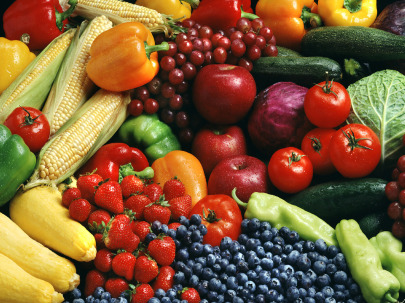

| Home | Dr. Mha Atma's Health Newsletter | Ideas for Good Health | Patient of the
week |
| >About |
| >Meet The Doctor |
| >Meet The Team |
| >Testimonials |
| >Hall of Fame |
| >Upcoming Schedules |
| >Contact Us |
| >New Patient Forms |
| >Exercises |
| >Links To Better Health |
| >Videos |
| >What is Chiropractic? |
| >Why go to Chiropractor? |
Healthy Life Newsletter January 2016
http://www.lifecarechiropractic.com/blog/arthritis-cures-glucosamine-celebrex/
Natural Treatments for Arthritis Go Head to Head with Dangerous Drugs
There are lots of claims about natural treatments for arthritis, but which ones work?
Without any good answers, all too many of us drop back on drugs for arthritis pain. The list can include drugs like steroids and NSAIDs. These drugs come with a list of side effects that you would not want to experience (if you’re really up to learning all about why NSAIDs are so bad for your health, feel free to check out my eBook on the topic by clicking here).
A few years back, the drug companies were able to come up with a new version of the most common class of anti-inflammatories, the cyclo-oxygenase inhibitors. This NSAID class includes drugs like ibuprofen, and indomethacin. The problem with this class of drugs is that one of the enzymes they block just so happens to protect the lining of the stomach. This is why the big risk with these drugs is bleeding ulcers and why some 20,000 people per year die as a result of taking these drugs.
Because of this tiny little side effect, researchers developed a class of drugs that do not block the one version of the enzyme that protects the stomach lining. Thus was born the selective cyclo-oxygenase inhibitors that rose to the top of the drug food chain to become one of the most financially successful blockbuster drugs of its time.
At least, until it was determined that, while this drug was a wee bit safer on the stomach, unfortunately this drug DID block on enzyme that protected the heart, leading to some 100,000+ heart attacks and who knows how many deaths from Vioxx alone. To make matters worse, Merck hid this data for years until it blew up in their face, resulting in hundreds of lawsuits from families that lost their loved ones.
Luckily (for the drug companies) the public has a short memory and Celebrex is still available on the market and prescriptions are still being written today for patents with arthritis pain who probably forgot about the entire Vioxx debacle.
So, if you happen to be one of those patients whose primary care doctor also has a short memory and wrote you a prescription for Celebrex, there may be an answer.
This particular article pits the natural combination of glucosamine and chondroitin up against Celebrex in 606 patients with knee arthritis and severe pain (Kellgren and Lawrence grades 2–3 knee osteoarthritis and moderate-to-severe pain based on the Western Ontario and McMaster osteoarthritis index-WOMAC-score ≥301 an a 0–500 scale).
Patients received either 400 mg chondroitin sulfate, 500 mg glucosamine combination three times a day or 200 mg celecoxib (Celebrex) every day for 6 months. Here’s what they found:
· The natural arthritis treatment group dropped 50.1%.
· The drug-known-to-kill group had a matched 50.2% decrease.
· At 6 months, 79.7% of patients in the natural arthritis treatment group and 79.2% in the toxic arthritis drug (Celebrex, in case you’re not following along) group fulfilled OMERACT-OARSI criteria.
· Both groups had more than a 50% reduction in joint swelling and effusion.
Sounds like a pretty even match, right? Yeah–except that neither glucosamine nor chondroitin, in the history of its use, has not been associated with even a single death (that I’m aware of–I’m sure there’s a patient or two who choked to death taking the supplements…), while Celebrex is in a class of drugs that is so bad for the heart that cardiology recommendations now state that NO heart disease patients should be on NSAIDs.
Oh.. and it’s WAY cheaper. So which one are YOU taking?
---------------------------
by: Michael Greger M.D.
Preventing Prediabetes By Eating More (Beans)
People who eat the most legumes appear to only have a fraction of the risk for a type of prediabetes known as metabolic syndrome. Legumes are beans, split peas, chickpeas, and lentils. In one study out of Iran, people who ate three or more servings of beans a week only had about a quarter of the odds of the disease, compared to those who ate one serving or less.
Bean consumption is associated with lower body weight, a slimmer waist, less obesity and lower blood pressure in population studies, but whether the association of bean consumption with healthier body weight and risk factors of metabolic syndrome is due to physiological effects of the beans themselves or is simply an indicator of a healthy lifestyle is uncertain. Anyone smart enough to eat beans may be smart enough to eat all sorts of other healthy foods, so maybe bean consumption is just a marker for a healthy diet.
A study out of the British Journal of Nutrition put this to the test. The researchers note that reducing belly fat may be the best way to treat metabolic syndrome and reduce the risk of prediabetes turning into full-blown diabetes. “Energy restriction has been the cornerstone of most weight-loss strategies; however, evidence suggests that the majority of individuals who lose weight [by calorie-cutting] regain it during subsequent months or years.” Starving ourselves almost never works long-term. Therefore, they conclude that “it is important to identify foods that can be easily incorporated into the diet and spontaneously lead to the attainment and maintenance of a healthy body weight and improved metabolic control.”
So, for the first time ever, the researchers did a head-to-head test: beans versus caloric restriction. The bean group was asked to eat five cups of lentils, chickpeas, split peas, or navy beans a week, and the caloric restriction group was asked to reduce energy intake. In other words, the bean group was asked to eat more food and the cutting calories group was asked to eat less food. Not-so-surprisingly, the more-food group won. Not only was regular bean consumption as effective as portion control in reducing prediabetes risk factors like slimming waistlines and better blood sugar control, but the bean diet led to additional benefits beyond just calorie reduction, presumably due to some functional properties of the beans and peas.
The researchers concluded that five cups a week of beans, chickpeas, split peas and lentils in an ad libitum diet (meaning subjects weren’t told to change their diet in any other way), reduced risk factors of metabolic syndrome. These effects were equivalent, and in some instances stronger, than telling people to cut 500 calories from their daily diet. These results are encouraging news for individuals with or at risk for type 2 diabetes since they indicate that simple diet changes, such as the inclusion of beans, can have a positive impact on blood sugar control.
---------------------------
http://www.toyourhealth.com/mpacms/tyh/article.php?id=1908
Three Natural Foods To Fight The Flu
Flu season is in full effect. Are you prepared? If you are looking to staying healthy this flu season go for a few natural foods that can boost your immune system. Here are three that have been proven to do the job:
1. Raw garlic
Garlic is considered a powerful flu fighter. Garlic contains compounds called allion and allicin, which have direct antiviral effects. A good way to get some garlic in your daily meals is by incorporating it into your recipes. You can also buy supplements to swallow whole as a boost.
2. Get Spicy
Using some spices such as turmeric, cloves and cinnamon can beat the flu even before it starts. These spices are packed with antioxidants, which help improve the function of the immune system. Try pouring some cinnamon on your holiday tea and coffee. You can also enjoy turmeric on some of your favorite dishes.
3. Berries
All berries have high concentrations of antioxidants to help fight off flu viruses. Blueberries were found to have more antioxidants than 40 other fruits and vegetables. Try eating a handful of raw berries every day to help you stay healthy during the flu season. You can also use these in smoothies and salads.
Try out these three natural foods to get your immune system going!
---------------------------
http://www.toyourhealth.com/mpacms/tyh/article.php?id=2195
Rethinking Calcium for Bone Health?
By David Seaman, DC, MS, DABCN
For decades, we – and especially women – have been conditioned to think a high level of calcium intake is required for maintaining bone health as we age. The mantra is crystal clear: "Calcium equals bone health," which translates into, "Consume dairy and take calcium supplements to prevent osteoporosis and promote bone health." But is this actually misguided advice?
In 2004, I wrote an article that focused on important non-calcium intake factors that influence bone health, including dietary acidity, essential fatty acids and magnesium.1 It was clear even then: Consumption of alkalizing vegetation (vegetables, fruits, roots / tubers) positively correlated with bone mineral density, but this was not the case for dairy intake, despite the fact it was / continues to be touted as being beneficial for bone health due to its calcium content.
However, despite the availability of this information, the message continues to be drowned out by the ongoing calcium propaganda, which has been dominant for decades. I personally never bought into the propaganda that women, in particular, should supplement with 1,000-1,500 mg of calcium per day for three main reasons:
· Bone loss is promoted by diet-induced chronic inflammation.1
· We cannot consume 1,000-1,500 mg of calcium by diet alone, which means such amounts are supraphysiologic and not something the human body is accustomed to.
· The calcium-magnesium balance in whole foods is close to a 1:1 ratio, which means high-dose calcium supplementation leads to abnormally high cal:mag ratios.
For at least the past two decades, my perception has been that if calcium is to be supplemented, it should be no more than a 1:1 ratio with magnesium to match the balance found in food. It also has been my opinion that we may actually not need to supplement with calcium and should instead focus on magnesium as the key mineral supplement, along with eating an anti-inflammatory (alkaline) diet.1-3
Recent Research Questions Benefits for Bone Health
In 2015, three published papers focused on the ineffectiveness and potential problems with calcium supplementation.4-6 Two appeared in the British Medical Journal, 4-5 demonstrating dietary and supplemental calcium had no significant effect on bone density and no preventive effect against bone fractures. Consider the authors' conclusion:
"Dietary calcium intake is not associated with risk of fracture, and there is no clinical trial evidence that increasing calcium intake from dietary sources prevents fractures. Evidence that calcium supplements prevent fractures is weak and inconsistent."
The third paper, published in JAMA Ophthalmology, examined the relationship between calcium supplementation and the expression of age-related macular degeneration (AMD). The average age of subjects with AMD was 67 years. Subjects who reported supplementing with more than 800 mg of calcium per day were more likely to develop AMD compared to subjects who did not report supplementing with calcium. There was a stronger association with AMD expression in 67-year-olds compared to 55-year-olds, and the impression is that a longer time span of calcium supplementation may be the reason.6
Getting Practical: What Should We Do With This Information?
My overall impression is that calcium should be supplemented in no more than a 1:1 ratio with magnesium. It may even be appropriate to supplement with more magnesium than calcium. Patients also should be educated that anti-inflammatory foods such as vegetables, fruits, and roots/tubers are alkaline and have been associated with maintaining bone mineral density. Supplementation with vitamin D and fish oil also should be considered.
Editor's Note: Always talk to your doctor before taking any dietary supplement, particularly if you have a pre-existing health condition and/or are taking medication.
References
Seaman D. Health care for our bones: a practical nutritional approach to preventing osteoporosis. JMPT, 2004;27(9):591-
Carpenter TO, DeLucia MC, Zhang JH, et al. A randomized controlled study of effects of dietary magnesium oxide supplementation on bone mineral content in healthy girls. J Clin Endocrinal Metab, 2006; 91:4866-72.
Dimai H-P, Porta S, Wirnsberger G, et al. Daily oral magnesium supplementation suppresses bone turnover in young adult males. J Clin Endocrinal Metab, 1998; 83:2742-48.
Tai V, Leung W, Grey A, Reid IR, Bolland MJ. Calcium intake and bone mineral density: systematic review and meta-analysis. BMJ, 2015; 351:h4183.
Bolland MJ, Leung W, Tai V, Bastin S, Gamble GD, Grey A, Reid IR. Calcium intake and risk of fracture: systematic review. BMJ, 2015; 351:h4580.
Kakigi CL, Singh K, Wang SY, Enanoria WT, Lin SC. Self-reported calcium supplementation and age-related macular degeneration. JAMA Ophthalmol, 2015; 133(7):746-54.

